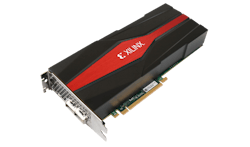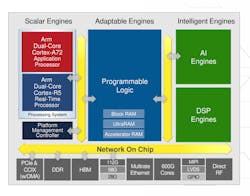Versal Card Streamlines ACAP FPGA AI Development
Xilinx released its VCK5000 Versal Development Card for AI inference (Fig. 1) that works with the company's Vitis development software. I included the video from Xilinx because it does a very good job of providing an overview of the Vitis workflow. While Vitis significantly reduces development complexity, it still involves a number of tools and steps to create an application that will run on the hardware.
The VCK5000 uses the Xilinx VC1902 Adaptive Compute Acceleration Platform (ACAP), which combines an FPGA, system-on-chip (SoC) processor complex, and hardware acceleration (Fig. 2). The entire ACAP family is supported by Vitis, enabling applications to be migrated between chips with different characteristics.
The magic of Vitis is the ability to combine software into a hardware and software combination that can run on Versal chips (Fig. 3). Vitis encompasses a number of open-source tools and platforms, including components like Linux, C/C++ compilers, and machine-learning frameworks. Xilinx has made the components work together with its other tools for ACAP/FPGA support so that developers can concentrate on applications and algorithms.
Versal ACAPs also are available on other Xilinx and third-party FPGA boards and modules. The latter is a handy way to deploy applications developed on the new board.



